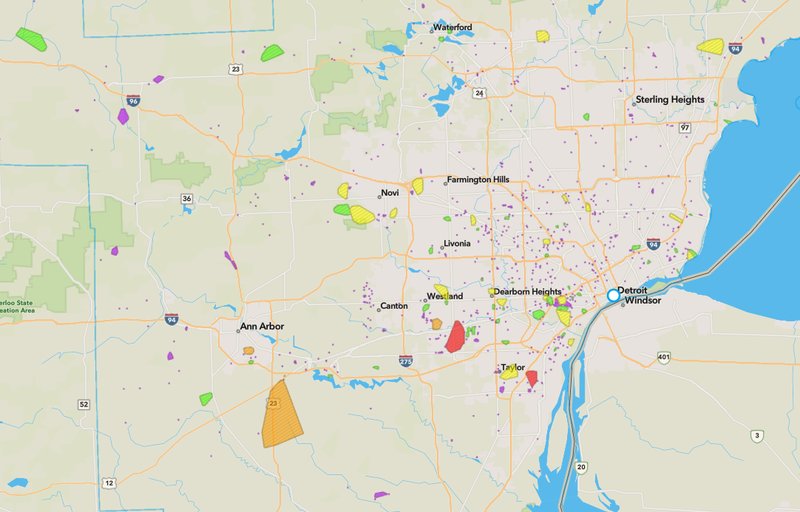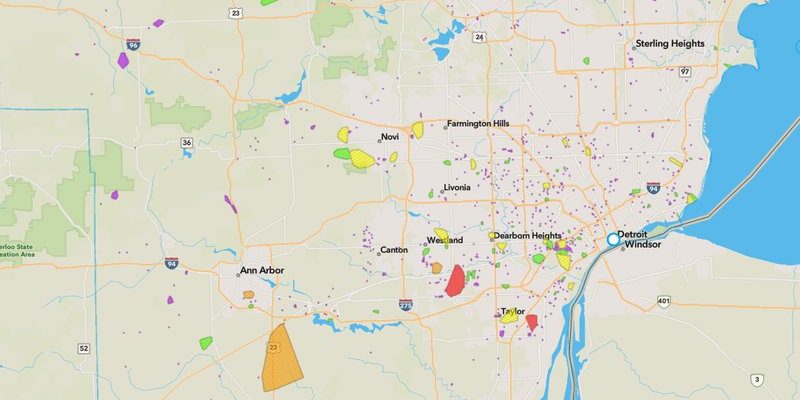
Honestly, it’s a bit like when you lose the remote and blame the sofa monsters—even when you know it’s probably somewhere obvious. Sometimes, what feels like a spike in outages is just a matter of memory, timing, or neighborhood rumors. But data can tell a clearer story—and so can a bit of investigation into why things might be flickering more these days. Let’s break down what’s happening in 98101, what’s normal, and what you can do to stay prepped the next time the power goes “poof.”
What Counts As A Power Outage in 98101?
First up, it helps to know what we’re actually talking about. A *power outage* isn’t just a quick surge or a flicker of the lights—it’s when your electricity stops completely for at least a minute or two. In the 98101 area, that covers everything from tiny blips that reset your digital clocks to hours-long events that leave you digging out flashlights.
You might be wondering if there’s a difference between momentary interruptions and full-scale blackouts. There is! Here’s how the utility company (Seattle City Light, if you’re local) typically sorts them out:
- Momentary Outage: Lasts just a few seconds. Annoying, but often caused by a tree branch brushing a power line or a quick auto-reset in the grid.
- Sustained Outage: Lasts more than five minutes and usually takes down a whole block or more. These are the ones you remember—and the ones tracked by outage reports.
So when people complain about outages “increasing,” they usually mean the bigger, longer ones. Short flickers? Those get less attention, but they can add up—especially if they do things like kick your devices offline or mess with appliances.
Tip: If you’re keeping track of outages at home, jot down how long they last—not just when the lights go out. It’ll help you notice patterns and get more accurate info.
What Does The Data Say About Power Outages In 98101?
Here’s the thing: Sometimes, the best way to cut through the noise and rumors is to dig into the numbers. Seattle City Light, which serves the 98101 area, keeps pretty detailed logs of outages year by year. From 2019 to 2023, outage reports in the downtown core have shown a mild uptick—though not a dramatic spike.
Let me explain. In 2019, 98101 averaged about 3–4 significant outages per year. By 2022, that number nudged up to 6–8 outages per year. Most lasted under two hours, but a handful stretched longer, especially during winter storms.
This isn’t just a local thing, either. Across Seattle, aging infrastructure and severe weather have pushed outage numbers up. But 98101, thanks to being dense and urban, often gets power restored faster than outlying neighborhoods. Still, when you rely on things like Wi-Fi, elevator service, or a remote to control your smart lights, even a few outages can feel like a lot.
How Does 98101 Compare To Other Zip Codes?
It’s easy to assume downtown gets the worst of it, but here’s a surprise: outer suburbs and hilly neighborhoods like Magnolia or West Seattle tend to have even more outages, thanks to overhead power lines and more trees. 98101, with its tangle of underground lines, is actually a little less prone to weather-related outages. Still, being in the urban core means any technical glitch can affect more people all at once.
Insider insight: While there is a slight increase in outages, much of the frustration comes from things like “brownouts” (partial drops in voltage) or issues that mess with synced devices and code-based locks, not always total blackouts.
Why Are Outages Becoming More Common In 98101?
You might be asking, “Why now? What’s changed?” The answer is a mix of old problems and new challenges.
First, Seattle’s grid is old in places—some of the wiring and transformers date back decades. As tech gets smarter and our reliance on devices grows (think syncing your smart thermostat, battery-powered sensors, and remote-controlled lighting), the demand skyrockets. And with more people moving into high-rises or coworking spaces, the pressure mounts on every fuse and substation.
Weather is a wild card, too. Recent years have seen stronger wind storms and heavier rainfall, even right downtown. Water and electricity are a bad mix, and even a minor flood in an underground vault can take out power for hours.
Some of the outages are also “planned” for upgrades or maintenance. While these are less disruptive, they still add to the tally. And with more code updates and stricter safety checks, there’s been a slight uptick in these preventive shut-offs in 98101.
- Increased tech use: More smart devices mean more chances for glitches and sync issues.
- Infrastructure upgrades: As the grid gets modernized, short outages pop up during repairs or resets.
- Weather events: Bigger storms equal more blown transformers or short circuits.
How Do Power Outages Affect Daily Life In 98101?
Losing power can mess with more than just your Netflix binge. In a place like 98101, where so many people rely on elevators, digital locks, and even remotes to open garage doors, an outage is more than an inconvenience—it can feel like your day is on pause.
For anyone working remotely (or gaming, let’s be honest), even a short outage can mean lost progress or unsaved work. If your building has electronic entry, you might find yourself (awkwardly) waiting in the lobby until power returns. And let’s not forget food in the fridge—after just a couple hours, things start to get questionable.
Real story: My neighbor once had a power outage hit just as his battery-powered remote died, leaving his garage door stuck closed. A quick manual reset saved the day, but it’s the kind of hassle you remember.
There’s also a mental toll. Each new outage chips away at trust in the system. People start buying backup batteries, learning how to pair remotes manually, or asking, “Is this just part of city life now?” The uncertainty is almost as frustrating as the outage itself.
What Can Residents Do To Prepare For Outages?
Honestly, you can’t control the weather or fix the entire grid yourself. But a few smart moves can make outages less of a hassle—especially if you live or work in 98101.
- Keep spare batteries for flashlights, remotes, and other essentials. Don’t count on phone flashlights alone.
- Know how to reset circuit breakers or manually open powered doors. Don’t wait until you’re stuck.
- Sync critical devices (like smoke alarms or medical sensors) to backup power, if possible.
- Write down important codes for building entry—paper works when your phone or Wi-Fi won’t sync.
And if you notice a pattern—a certain corner of your apartment always losing power—report it. Utilities can’t fix problems they don’t know about.
How Do Utility Companies Respond To Outages In 98101?
Seattle City Light has crews on call 24/7, especially in dense zones like 98101. When a report comes in, they diagnose the source: Is it a blown transformer, a code alert from a smart meter, or just a rogue branch somewhere? The system prioritizes areas with hospitals, transit lines, and big buildings.
They also send updates via text or their website, so you can check estimated restoration times or see outage maps in real time. If your building has a remote backup generator, it might kick in—but most residential places don’t unless you’re in a high-end tower.
Heads-up: Utilities are rolling out more sensors and automated reset tools, which can reduce downtime but sometimes mean more short, annoying “micro-outages” as the grid heals itself.
Are There Alternatives or Workarounds for Frequent Outages?
If outages are making you rethink your living situation, there are a few things you can try before packing up and moving to the suburbs. Investing in a small uninterruptible power supply (UPS) can keep your modem, laptop, or critical devices running for an hour or two—plenty of time to save files or keep working from home.
Some apartment buildings are exploring battery backups for emergency lights or elevators, especially if codes require it. And smart-home fans are switching to remotes that work offline, so a quick reset after an outage gets the system running without re-syncing everything from scratch.
Here’s a quick comparison:
| Solution | Pros | Cons |
| Personal generator | Reliable for longer outages; runs key devices | Noisy, expensive, needs fuel, not allowed in some buildings |
| Battery backup (UPS) | Silent; keeps internet and devices up | Limited runtime; won’t power big appliances |
| Manual overrides | Always works; no batteries needed | Not as convenient; requires planning |
So—Are Power Outages Really Increasing In Zip Code 98101?
Let’s bring it all together. The numbers show that *power outages in 98101 are increasing a bit*, but not off the charts. Most interruptions are still short and quickly fixed, especially compared to some neighborhoods with more overhead wires. Still, if you rely on synced gadgets, remote controls, or coded entry, even one or two extra outages a year feel like a headache.
Here’s the bottom line: Knowing how the grid works, keeping a few backup batteries, and learning quick troubleshooting tips—like resetting devices or opening doors manually—puts you ahead of the curve. Outages might be up a little, but with a bit of prep, you can ride out the next one in the (battery-powered) glow of calm instead of panic.
